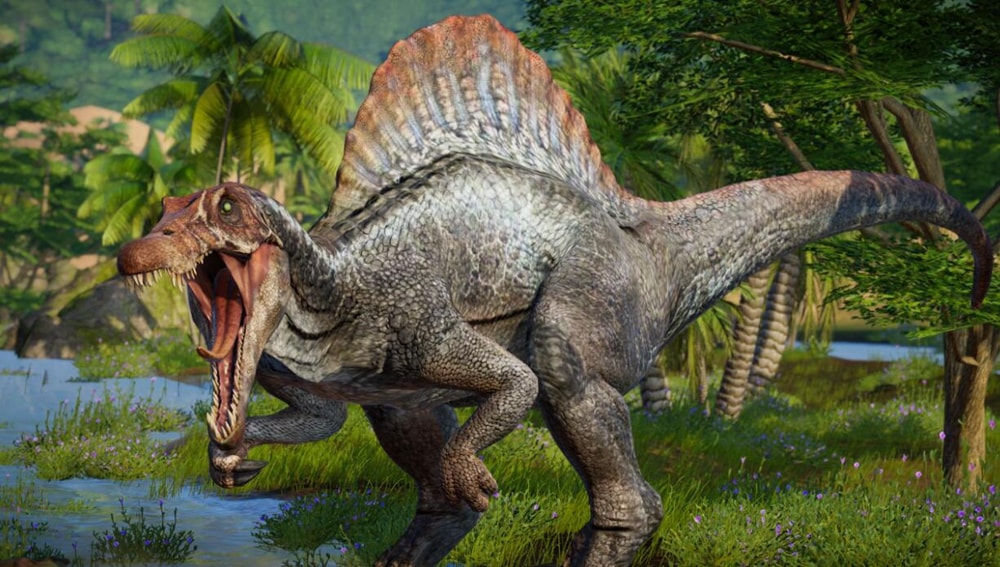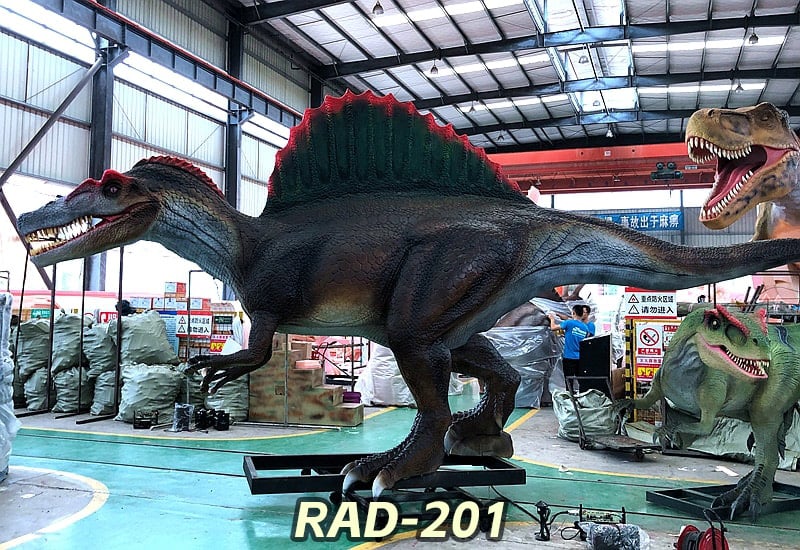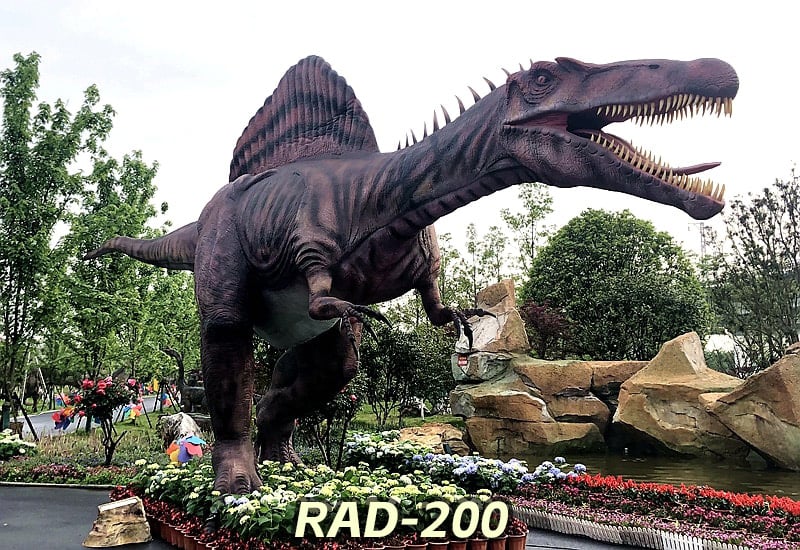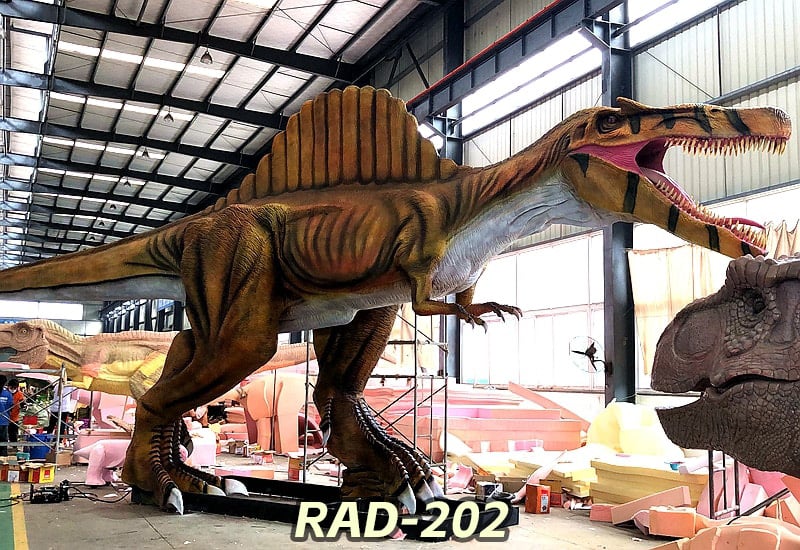Dinosaur Encyclopedia
Spinosaurus | One of the Largest Terrestrial Carnivorous Dinosaurs
Spinosaurus, a carnivorous dinosaur known for its massive size and aggressive nature, gained fame for the enormous sail-like structure on its back. This large “sail” is supported by several gigantic elongated spine bones, connected in the middle by muscles and skin. From a distance, the Spinosaurus walking through the forest resembles a sailboat navigating in a green ocean. However, be warned, this is a fierce “pirate ship.”

Spinosaurus Knowledge Card
- Family: Saurischia · Spinosauridae · Spinosaurus genus
- Distribution: Africa, Morocco, Egypt
- Time: Approximately 95 to 93 million years ago, during the Mid-Late Cretaceous period
- Length: 13.7 meters
- Weight: 7 to 10 tons
- Identification Tips: Numerous protruding bones on the back, resembling a sailboat with sails raised.
Dinosaur Record Breaker
According to recent estimates, Spinosaurus is currently known as the largest carnivorous dinosaur. Data from 2005 reveals that Spinosaurus possesses one of the longest skulls among carnivorous dinosaurs, measuring approximately 1.75 meters.
Terrifying Carnivore
With a large head, Spinosaurus is considered an intelligent dinosaur. Its forelimbs are shorter than its hind limbs, so it typically relies on its two hind limbs for movement, though occasional quadrupedal walking is not ruled out. Robust physique coupled with sharp teeth makes Spinosaurus a formidable carnivorous dinosaur, capable of easily subduing prey, including other carnivorous dinosaurs. Fossilized fish bones have been found in Spinosaurus stomach fossils, suggesting a potential piscivorous aspect to its diet.
Distinctive Features
Spinosaurus’s mouth is filled with conical-shaped sharp teeth, lacking serrations on the upper side. A small protuberance is present in front of its eyes. The sail structure cannot be retracted or folded, making it improbable for Spinosaurus to defeat or consume larger dinosaurs, as struggling prey could potentially break these sails.

Prominent Sail-Like Structures
One of the most remarkable features of Spinosaurus is the high sail on its back, consisting of sail-like structures approximately 7 to 11 times the length of Spinosaurus’s vertebral column. These sail-like structures extend from the vertebral column and are formed by very tall neural spines. Regarding the purpose of these “sails,” scientists have various theories. Some believe it serves as a display for attracting mates, while others compare its function to that of “solar panels,” absorbing sunlight.
Speculations about the Sail’s Function:
- These large sails may help them resist natural predators, protecting themselves and their offspring from predatory attacks. Their intimidating size deters many animals, providing a certain level of defense.
- It could serve as a mating display, with the dorsal spines of male Spinosaurus possibly used to attract females or as a territorial display. Research suggests that the length of the dorsal spines in male Spinosaurus is related to the territory area they occupy.
- The large sails could also assist in maintaining body balance, aiding in terrestrial locomotion.
- During the breeding season, these sail-like structures may be used for showcasing before mating with the opposite sex. Male Spinosaurus might use their large tail fins and huge dorsal bony plates to display their “muscular physique” to increase their success rate in the breeding process.
- It may help absorb sunlight to increase body temperature (although dinosaurs are considered cold-blooded), as this unique structure facilitates light reflection in the environment, raising local temperatures. During the day, many animals’ skin spots help regulate humidity, temperature, and electrolyte levels, influencing changes in skin pH, which in turn affects color and appearance features.
Do you know?
In the movie “Jurassic Park III,” the Spinosaurus is portrayed as a large, powerful creature, surpassing even the Tyrannosaurus rex in strength and, in one instance, killing a T-rex in a battle. In reality, Spinosaurus and T. rex existed on different continents and during different periods, so they never had the chance to engage in a duel.
The following image is our produced animatronic spinosaurus. You can click the link to view the product or video.


